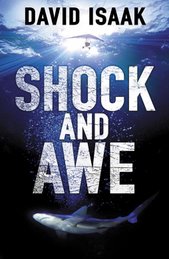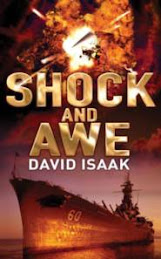Once more you can thank (or perhaps blame)
a post by Emma Darwin for impelling me to gnaw on a subject and try to set my thoughts in some sort of order. As usual, Emma’s post touched on a half-dozen interrelated ideas; and, also as usual, my post contains only one idea. Maybe less.
'Thinker attributions’ are the inward equivalent of dialogue tags—that is, ‘she thought’ or ‘he wondered.’ In the Jane Austen era (or in the hands of Patrick O’Brian in our own era), such attributions often followed the conventions of standard dialogue:
“Ah-ha, my friend,” he said inwardly, “that caught you off guard…” or
“How the devil did she get to the top of that steeple?” he wondered.
Although these usages are still acceptable, many contemporary writers avoid quotation marks around thoughts. Modern readers tend to see quotation marks as stating that something was said aloud, and it can take them a moment to sort out what is being said from what is being thought—especially when inserted in the midst of an exchange of dialogue. Quoted thought becomes even more confusing if a character thinks and speaks in the same paragraph:
“That’s Susan, all right. Who else would wear galoshes with a bikini?” he said. “How the devil did she get to the top of that steeple?” he wondered.
Is that a mess, or what? To be sure, you could make it less clunky by rearranging it, but one of the constraints is that you probably don’t want quotation marks smacking up against one another. It’s simpler by far if you render the thoughts without marks, a more 'modern' style:
“That’s Susan, all right,” he said. “Who else would wear galoshes with a bikini?” How the devil did she get to the top of that steeple? he wondered.
or
“That’s Susan, all right,” he said. “Who else would wear galoshes with a bikini?” How the devil did she get to the top of that steeple? he wondered.
Ah, I hear you saying, but you don’t even need the thinker attribution. Why not simply:
“That’s Susan, all right,” he said. “Who else would wear galoshes with a bikini?” How the devil did she get to the top of that steeple?
Or even:
“That’s Susan, all right.” How the devil did she get to the top of that steeple? “Who else would wear galoshes with a bikini?” [etc., etc.]
True enough, and many editors and writing teachers now urge the elimination of thinker attributions in almost all situations. Sure, they say, they were needed back in the 19th century, when omniscient narrators slipped from one head to another; but in most fiction nowadays, they can be cut.
Emma’s point (and I couldn’t agree more) was that simply because attributions
can be cut doesn’t mean that they always
ought to be cut. Her example is wonderfully sly, because it doesn’t even involve a direct thinker tag, but instead nudges you deeper into POV by using “…I looked…” “…I watched…” “…I stared…”, until the moment is vividly, pointedly from the narrator’s eyes. None of these nudges is necessary to relate the story events, at least in the strict sense of information conveyed, but the quality of the reading experience is quite different.
I can think of five occasions when some form of thinker attribution is appropriate, and might even be required.
1. Handling shifts in POV without an explicit break. If you’re going to slither from head to head, there will be a point where you need to anchor the POV in a new consciousness. Sometimes the simplest means is to come right out and say ‘she thought’, but some writers, like Ann Patchett, are so good at piling up little clues that it is hard to point to a moment when you’ve been re-anchored; it’s an accumulation of evidence. (Of course, many of those who counsel you to avoid thinker attributions also tell you never to shift POV except at a break; some will even insist on a new chapter for each POV. Lord knows such an approach is simpler, and will keep the unskilful from hurting themselves, but we're old enough to mess about with fire if we choose.)
2. Modulating psychic distance. I’ve
rattled on about psychic distance before. At one end of the spectrum you have narration in the voice of the novel (
When the hot Santa Ana winds blow through Los Angeles, tempers turn as brittle and dry as the brush on the hillside…); at the other end, we are so firmly embedded in the mind of the POV character that thoughts can be reported without any question that the belong to the character rather than the novel (
Fuck Henry, and fuck this job, and fuck this unending goddamned hot wind.). Explicit thinker attributions (“he thought”) occupy a middle ground in this spectrum. Emma’s indirect “he watched,” etc., clues, push us yet deeper into POV, or re-anchor us there. When dropping down from a large psychic distance to a close one—or even more important, when drawing back from a close psychic distance—thinker attributions smooth the transition, easing the reader effortlessly along the narrative.
3. Displaying thinking in concurrent time. Thinking is often treated in fiction as if it moves faster than the speed of light, and that usually isn’t a narrative problem. But when the time expended pondering is relevant—when the bomb is ticking, or when the angry lover demands a response—then thinking becomes an action, a time-consuming action, and like other important actions, it needs to be described, and often attributed.
4. Improving rhythm, prosody, or emphasis. Even when we are already in such a close psychic distance that there is no doubt we are hearing the character's unmediated thoughts, a thinker attribution can often add a certain emphasis to the parsing of a phrase.
I’ve earned this money and I’m going to keep it.
scans differently than:
I’ve earned this money, she thought, and I’m going to keep it.
and it’s the writer’s job to decide which fits best, whether a thinker attribution is “necessary” or not. The first example is more intimate, but I find the second to be more emphatic; the hesitation in the middle of the thought is more self-conscious, as if sje jhas paused to cross her arms defiantly across her chest.
5. Doing it because it feels right. Like the centipede who tripped when he thought about coordinating all those legs a-walking, a writer is (or ought to be) doing several things at once. When psychic distance is great a thinker attribution draws us closer, when we are in close a thinker attribution subtly pushes us away, and when we are in a tangle of action or summary, an attribution can make the events more vivid and personal. Attributions can introduce a nuanced pause, or increase the drama of a ticking clock, heighten hesitation, or confirm that we have slid from one point of view to another. And, to be frank, sometimes it just sounds better. Consciously or unconsciously (or, in my case, in my typical state of semiconsciousness) the writer needs to be balancing all of these needs to achieve the desired total effect, and it isn’t the sort of thing that’s amenable to rules.
There's my five. I may have missed some.
Writers need to know that thinker attributions can often be dropped. But knowing they are optional does not amount to a rule that they should be eliminated whenever the sense of the narrative can be preserved without them.
Since when is delivering information in the minimum number of characters the goal anyway? he wondered. What is this, R-U-OK text messaging?
 And what's wrong with crutches, if you happen to need one?
And what's wrong with crutches, if you happen to need one? f it was a work of art pure and simple. It certainly is nicely detailed: cowrie-shell eyes, carefully articulated scales down the reptilian back...I'm especially fond of the way the tail reunites by wrapping around the cane, making the cane asymmetric in all three axes of rotation.
f it was a work of art pure and simple. It certainly is nicely detailed: cowrie-shell eyes, carefully articulated scales down the reptilian back...I'm especially fond of the way the tail reunites by wrapping around the cane, making the cane asymmetric in all three axes of rotation.


